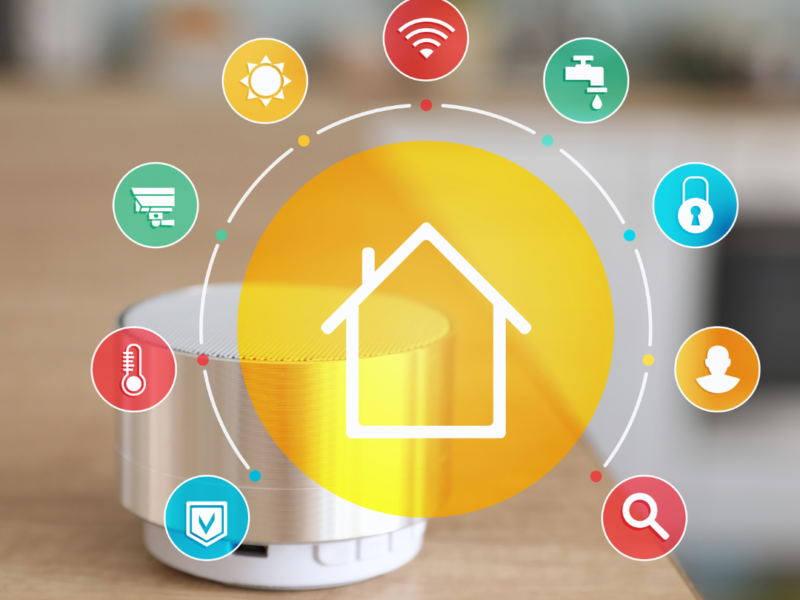Wearable technology is rapidly transforming personal health and lifestyle management. From smartwatches that monitor heart rates to fitness trackers that help users set and achieve wellness goals, these devices are becoming essential tools for many. The future of wearable technology promises even greater integration with daily activities and advanced health monitoring capabilities.
Innovations such as augmented reality glasses and smart clothing are on the horizon, expanding the possibilities of what wearables can offer. As technology evolves, wearables will likely connect more seamlessly with smart home devices and health care systems, creating a comprehensive ecosystem that supports users’ health and productivity.
Consumers can expect enhanced functionalities that go beyond fitness tracking, including more personalized health insights and improved user interfaces. These advancements will empower individuals to take charge of their health in ways that were not possible before, positioning wearable technology at the forefront of a digitally integrated lifestyle.
Evolution of Wearable Devices
Wearable technology has transformed significantly over the years. From simple calculators to advanced smartwatches, the evolution highlights the integration of fitness and health monitoring in everyday life.
From Calculators to Smartwatches
The journey of wearable devices began with basic gadgets like calculators and digital watches in the 1970s. These devices laid the groundwork for innovations in personal technology.
By the 2000s, the emergence of smartwatches marked a pivotal shift. Featuring touchscreens and connectivity options, smartwatches provide notifications, apps, and health monitoring functions. This integration allows users to track daily activities and receive timely updates without reaching for their smartphones.
The Rise of Health and Fitness Trackers
Health and fitness trackers gained popularity in the 2010s, changing how individuals approach personal wellness. Devices like Fitbit and Garmin offered features such as step counting, heart rate monitoring, and sleep tracking.
These trackers utilize biosensors to collect real-time data, making it easier for users to set goals and monitor progress. Their sleek designs and user-friendly interfaces contribute to widespread adoption, helping to foster a more health-conscious society.
Wearable Technology in Healthcare
Wearable technology is increasingly pivotal in healthcare, enhancing patient monitoring and data collection. Devices like ECG monitors and heart rate monitors allow for continuous assessment of patients’ health metrics.
By transmitting data to healthcare providers, these wearables improve patient management and early detection of potential health issues. As technology advances, the integration of wearables into clinical settings is expected to expand, making healthcare more accessible and efficient.
The Integration of Augmented and Virtual Reality
The convergence of augmented reality (AR) and virtual reality (VR) is transforming how individuals interact with technology. This integration enhances user experiences, enabling immersive environments and augmented applications across various sectors.
Smart Glasses and Augmented Experiences
Smart glasses are at the forefront of augmented experiences. Devices like Google Glass demonstrate how AR overlays digital information onto the real world.
These glasses can provide navigation assistance, display notifications, or enhance gaming experiences.
Key features include:
- Real-time information: Users can access important data without looking at their smartphones.
- Hands-free operation: Smart glasses enable multitasking, allowing users to engage with their environment while staying connected.
As manufacturers continue to innovate, the functionality and affordability of smart glasses may increase. This growth could encourage broader adoption in both consumer and enterprise markets.
Virtual Reality’s Role in Daily Life
Virtual reality is reshaping daily activities, providing immersive experiences that were once reserved for gaming. Current VR headsets allow users to enter virtual environments for training, education, and therapy.
For instance, VR can simulate real-world scenarios for medical training, improving practitioner skills without patient risk.
Applications include:
- Education: VR enables interactive learning experiences, making complex subjects more accessible.
- Fitness: VR incorporates engaging workouts that motivate individuals to stay active.
The continual advancement of VR technology promises more personalized and immersive applications in daily routines, expanding opportunities for entertainment, education, and professional development.
Personalization and Usability of Wearable Tech
Wearable technology is evolving to prioritize both personalization and usability. These elements are crucial for enhancing user experience, ensuring devices meet individual needs, and promoting broader engagement.
Customization and User Experience
Wearable devices increasingly offer customization options tailored to individual preferences. Users can adjust settings related to notifications, health metrics, and interface layouts. This level of personalization enhances the user experience, making devices feel more integrated into daily life.
Smart eyewear, for example, can project personalized information based on user habits and context. This can include customized notifications, reminders, and even navigation prompts. When devices align closely with user preferences, satisfaction and engagement significantly increase.
Users can also choose from various styles and sizes, ensuring comfort and aesthetic appeal. This attention to detail in customization can foster a deeper connection between the user and their device.
Accessibility and Engagement
Accessibility is vital for wearable technology to reach a broader audience. Features such as voice commands and haptic feedback improve usability for individuals with different abilities. Ensuring that technology can be operated by everyone promotes inclusivity.
Engagement is enhanced when users can seamlessly interact with devices. Wearables that offer intuitive interfaces and simple navigation foster user retention. For instance, health-focused applications on wearables provide easy access to fitness data, promoting ongoing usage.
Moreover, the integration of social features can also drive engagement. Users often share achievements and progress with friends, which can encourage continued use and motivation.
Future Challenges and Opportunities
As wearable technology continues to evolve, several challenges and opportunities will shape its future landscape. Key areas of focus include energy efficiency, advancements in health monitoring, and the importance of data privacy and security.
Energy Efficiency and Device Longevity
Energy efficiency remains a significant challenge for wearable devices. Many wearables rely on batteries that require frequent recharging. Developing longer-lasting batteries and exploring alternative power sources like solar or kinetic energy can enhance user experience.
- Key strategies for improving energy efficiency include:
-
- Low-power sensors: These can monitor health metrics without draining battery life.
- Energy-efficient communication protocols: Utilizing Bluetooth Low Energy (BLE) can significantly extend battery lifespan.
These advancements not only benefit users with convenience but also reduce electronic waste through longer device longevity.
Health Monitoring Advancements
The future of wearables is promising in terms of health monitoring. Devices are becoming more sophisticated in tracking biometric data such as heart rate, blood pressure, and glucose levels. Innovations in this space can lead to better management of chronic health conditions like diabetes.
- Health metrics being integrated into wearables include:
-
- Real-time glucose monitoring: Non-invasive sensors for diabetes management.
- Advanced sleep tracking: Providing insights into sleep patterns and overall well-being.
These features empower users to take proactive steps toward healthier lifestyles by providing actionable health data.
Data Privacy and Security
With the increase in health data collection comes significant responsibility regarding data privacy and security. Wearables gather sensitive information that must be protected from breaches and misuse.
- Key considerations for ensuring data privacy include:
-
- Encryption of health data: Protects user information during transmission and storage.
- User consent protocols: Ensuring users understand how their data will be used and shared.
Addressing these concerns will be essential for building user trust and encouraging widespread adoption of wearable technology.



